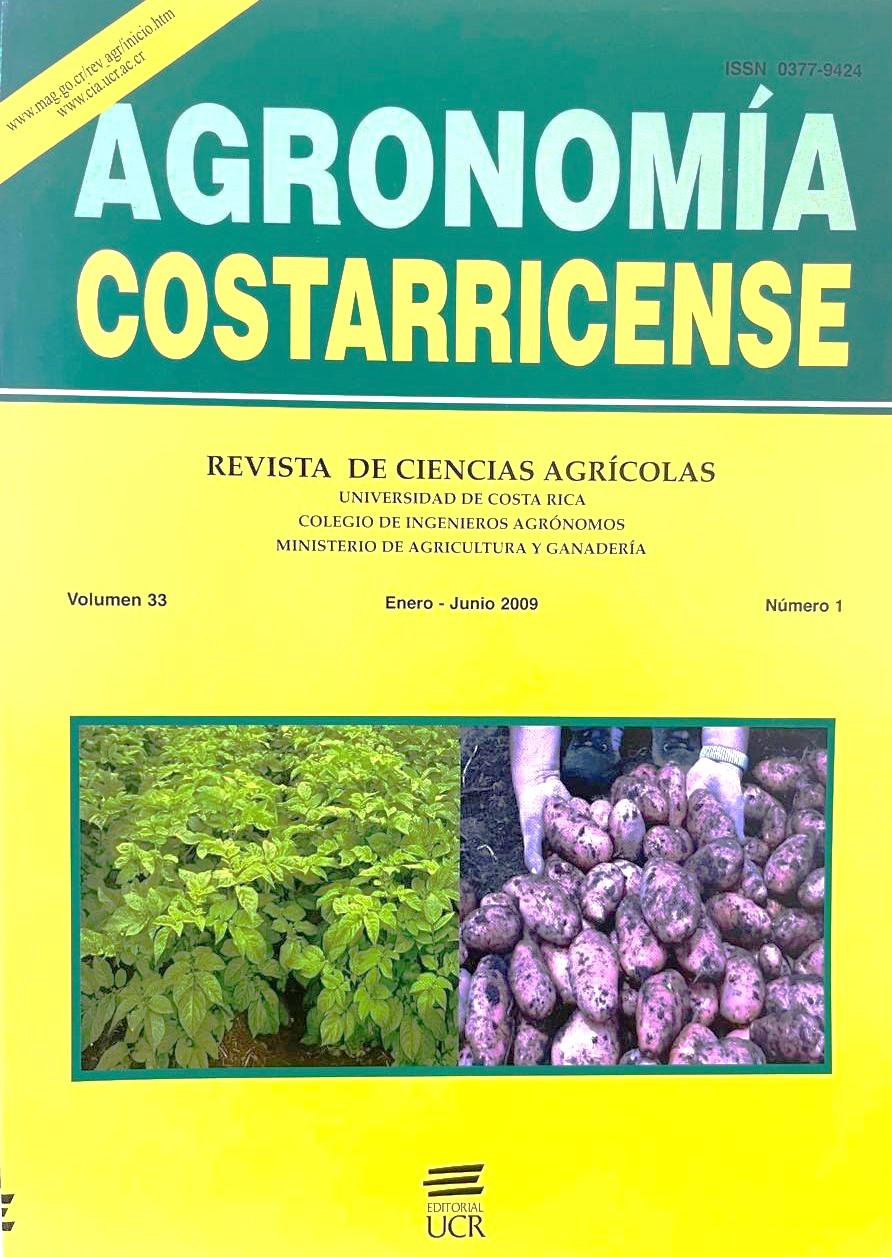Abstract
The residual effect of P-fertilizer applied to 2 consecutive potato crops growing in a Hydric Hapludands was studied at Hacienda Juan Viñas. Phosphorus rates compared were 0, 150, 300, 450 and 600 kg.ha-1 of P2O5, applied to the first crop and to 2 consecutive crops. To avoid fertilizer placement effects, soil samples were taken after plowing the land for planting and after digging the potatoes at harvesting. The samples were analyzed for P using modified Olsen, Bray 1 and Mehlich 3 extractants. The addition of P to the first crop only allowed to obtain low potato yields, without any significant residual effect of the P availability in the soil. After P additions for 2 consecutive crops, yields increased proportionally to the rate of P added, to attain a maximum yield of 16.39 t.ha-1 with the rate of 600 kg.ha-1 of P2O5. The Modified-Olsen method best estimated soil P changes due to P-fertilizer additions after the 2 years of fertilization and cropping. To attain measurable soil P residual rates, over 450 kg.ha-1 of P2O5 for 2 consecutive years were required; this allowed obtaining an increase of 2-3 mg.l-1.year-1 of P. Phosphorus retention in the soil was 93% during the first year of the experiment, decreasing to 91% during the second year. Among soil P extractants, the best correlation between methods was Modified Olsen and Mehlich 3 (R2= 0.705).

This work is licensed under a Creative Commons Attribution-NonCommercial-NoDerivatives 4.0 International License.
Copyright (c) 2016 Agronomía Costarricense

